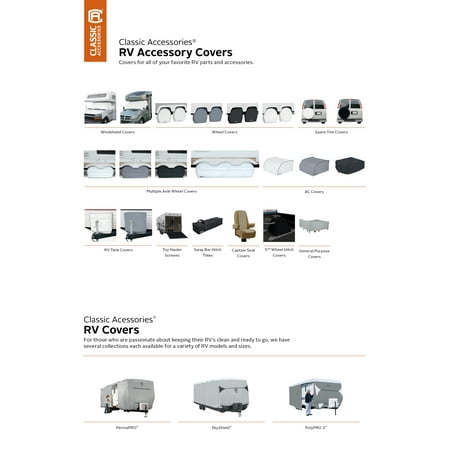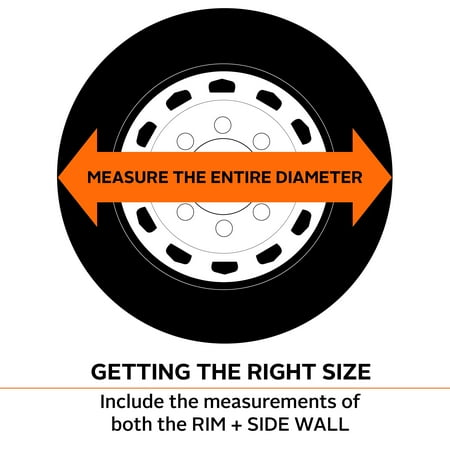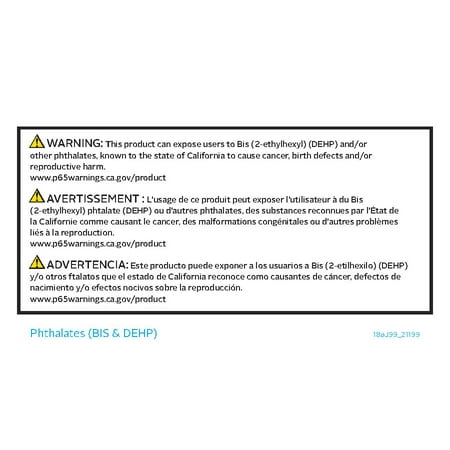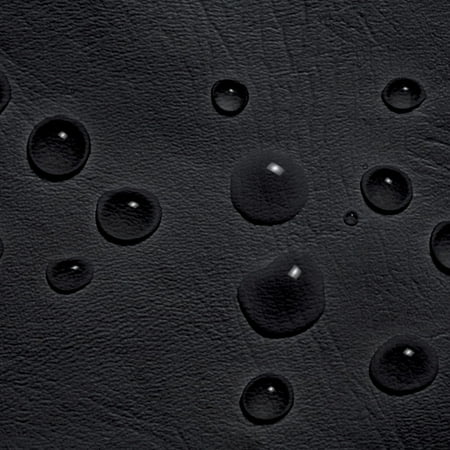Classic Accessories Over Drive RV Wheel Covers, Wheels 18″ – 21″ Diameter, 6.75″ Tire Width, Black
The Over Drive RV Wheel Covers by Classic Accessories provides sturdy tire protection, guarding tires and wheels against sun damage, dirt and rust when your RV is parked. When you buy a Classic Accessories RV cover you are not just getting a cover; you’re also purchasing peace of mind. Not only will you be protected from the elements, but you’ll be protected with the easiest warranty in the industry. If your product fails within the warranty period, look for us online and take advantage of our Hassle-Free warranty program supported by our US-based customer service team.







Fits wheels 18″ – 21″DIA, 6.75″ tire width (Model 0)Three-year limited warrantyProtects tires and wheels from sun damage, rust and dirt when your RV is parkedWater-resistant, wipe-clean vinyl with a soft, non-scratch backingTwo wheel covers in each packageFast and easy slip-on fitDurable thick material





Reviews
There are no reviews yet.